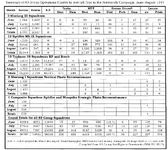J.A.W.
Banned
Not good enough against the JaBo attacks.I'll let the pilots combat reports speak for themselves in regards to how effective the Spitfire was against FW190 incursions.Spitfire Mk XII Performance Testing
Spitfire Performance Testing, wartime flight trials and reports of Spitfire aircraft. Spitfire Mk XII data.www.spitfireperformance.com
Or the Typhoon/Sabre program would've been cancelled - which the 'Spitfire Mafia' were dead set - on doing...
Edit:
Ok the vaunted Griffon Spit, eh? What's the saying now - oh yeah: 'a day late & a $ short'.
I should dig out a book with the account of the oh-so-proud-of-his-new-Spit Mk XII Squadron Leader who
foolishly wagered an open bar on winning a base-to-base low-level race with a Typhoon S/Ldr - to his cost.
Last edited:

